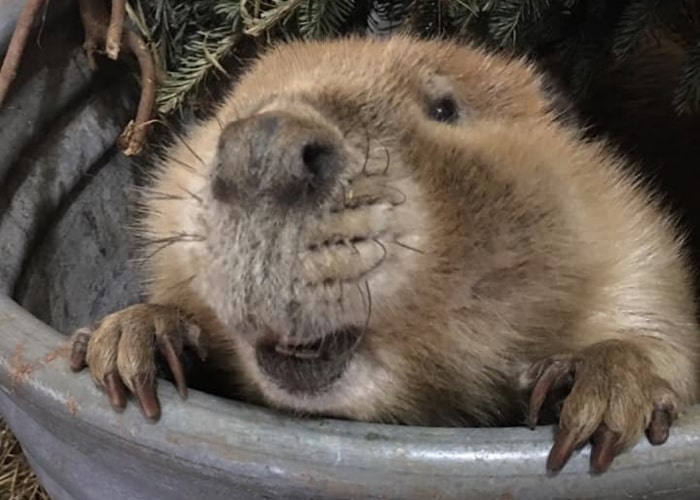American Beaver
Castor Canadensis
Conservation Status: Least Concern
Characteristics:
- They typically weight from 24 to 70.7 pounds and are 29 to 35 inches long. Their tail adds another 8 to 14 inches to its length.
- They have webbed hind feet and large, flat, nearly hairless tail.
- They have two separate layers of coats. The top portion of the coat is coarse and thick, offering defensive benefits.
Lifespan: Average lifespan for a beaver in the wild is about 24 years.
Range and Habitat:
- They live in or around freshwater ponds like lakes, rivers, marshes, and swamps except in the desert areas of the Southwest United States.
- Beaver colonies create dams of wood and mud to provide still, deep water in order to protect against predators such as wolves, coyotes, bears, or bald eagles.
- They float materials to their homes.
- Their homes are called lodges and they are made from mud and branches.
- Lodges are positioned in the middle of the pond, with a hidden entrance (from the water), which prevents predators to even get in touch with them.

Diet:
- Beavers are semi-aquatic herbivores. This means they obtain some food in water and some on land.
- Most of their diet is made up of tree bark and cambium. Cambium is the soft tissue that grows under the bark of a tree.
- They especially like willow, maple, birch, aspen, cottonwood, beech, poplar, and elder trees.
- They also eat vegetation like roots, buds, and other water plants.
Behavior:
- Famously busy, they turn their talents to reengineering the landscape around them.
- Beavers are very social and live in groups called colonies.
- Beavers are monogamous and mate for life or until a partner dies.
- Beavers are mainly nocturnal, doing their work and hunting at night.
Fun Facts:
- Beavers are the second largest rodent in the world after the capybara.
- Beavers are second only to humans in their ability to manipulate and change their environment.
- Beavers can stay under water for 15 minutes without coming to the surface. They have transparent eyelids that act as goggles so they can see as they swim.
Keeper Notes:
Finn was born May 1, 2010 and daughter Shiloh on July 16, 2015 at Zoo Montana in Billings, Montana.

